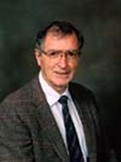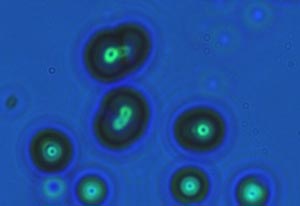Research into the phenomenon formerly known as cold fusion is heating up again. Despite an initial chilly reception to anything related to this once-maverick science, it seems that studies of what are now called low energy nuclear reactions are re-emerging as potentially valid science. Almost a dozen scientists presented the latest findings in low energy nuclear reactions to the annual meeting of the American Chemical Society in Chicago during March.
On 23rd March 1989, Stanley Pons and Martin Fleischmann announced to a stunned press conference the discovery of an almost unlimited source of energy based on the nuclear fusion of atoms taking place in an electrochemical cell at room temperature. The announcement took the media by storm as years of plasma fusion experiments would be kicked into touch by the discovery and the world’s energy problems solved.

Dr George H Miley
Unfortunately, a lack of immediate scientific peer review, the probably misguided media courting, and a seeming inability of the scientific community to reproduce the Pons-Fleischmann experiments soon turned the hyperbole into scathing criticism. Cold fusion was apparently dead in the distilled water.
Among the laboratory debris, however, there remained a spark. Researchers in Japan and elsewhere, intrigued by the initial results from the pair continued the search for cold fusion energy. Dozens of peer-reviewed papers that discuss the potential of a cold fusion energy supply in more sober terms have been published. And, several of the most cynical reviewers have hinted at acceptance that some excess energy may be drawn from low temperature electrochemical experiments.
Cold fusion cell (Photo by Steven Krivit of device at US Navy SPAWAR Systems Center in San Diego)
Although ‘cold fusion’ is considered controversial, the scientific process demands of us to keep an open mind and examine the new results once every few years, says Gopal Coimbatore of Texas Tech University, who chairs the American Chemical Society’s Division of Environmental Chemistry. As such, a day-long symposium on New Energy Technology at the ACS meeting demonstrated that there remains great interest in the field with several rigorous, repeatable experiments having been carried out on low energy nuclear reactions.

Heat spots (composite image showing particle tracks from SPAWAR LENR experiment (Photo by Pamela Mosier-Boss)
Steven Krivit, editor of New Energy Times and author of The Rebirth of Cold Fusion presented an overview of the field as well as providing an historical and scientific context and set the stage for results from Fleischmann and colleague Melvin Miles of the University of LaVerne in California, to discuss more precise calorimetric techniques used to study the excess heat energy produced by these systems. The main criticism of the original cold fusion experiments in 1989 was that errors in calorimetric measurements misled Pons and Fleischmann into believing they had generated energy through a low-temperature nuclear process, that was thought impossible on the basis of conventional physical models of the time.
Miles reported evidence that the excess heat generated is indeed nuclear and not the result of calorimetric errors. Our work shows that cold fusion effects are real, but we cannot assess if this excess heat can become useful, he explains, Much more research work is needed to answer such questions.
Chemist George Miley of the University of Illinois, Champaign-Urbana is among the rare few who claim to have evidence of transmutation – actual nuclear reactions – in their experiments. Transmutation is common in high-energy physics among the nuclear reactors, atomic bombs, plasma fusion experiments, and particle accelerators but is confounding physics when it occurs on electrodes coated with thin chemical films. However, Miley reports what he describes as clear evidence of a nuclear event occurring in LENR and has a new theory to explain his observations. Miley is on record as saying that The field is so polarized by the bad name given to it by the original ‘cold fusion’ episode years ago that it’s difficult to talk about it without people becoming emotional – most scientists are either ‘for it’ or ‘against it.’ Thus, it’s a very difficult field to work in, he says.
The key question in LENR studies boils down to – How can chemical conditions lead to a nuclear reaction? It is almost an alchemical promise, but analytical chemist Pamela Mosier-Boss and her colleagues at the Space and Naval Warfare Systems Center in San Diego, California, also believe that they have evidence that such nuclear reactions are occurring. In a series of experiments, a standard radiation detector used in nuclear physics research was used to record evidence of high energy atomic particles, providing physical evidence to suggest that a nuclear event had occurred in the LENR experiments. They are currently endeavouring to verify their results.
Attempts to harness energy from fusion, plasma fusion, is big science, requiring millions of pounds of investment and huge research teams and backup staff. If cold fusion…ahem low energy nuclear reactions…could be made to work in a desktop apparatus then even a marginal energy excess could be harnessed to provide an essentially inexhaustible power supply at potentially very low cost.
Further reading
New Energy Times
http://www.newenergytimes.com/
Dr George H. Miley
http://www.ne.uiuc.edu/faculty/miley.php
Space and Naval Warfare Systems Center San Diego
http://enterprise.spawar.navy.mil/body.cfm?type=c&category=29&subcat=63
Suggested searches
nuclear reactions
nuclear physics
cold fusion